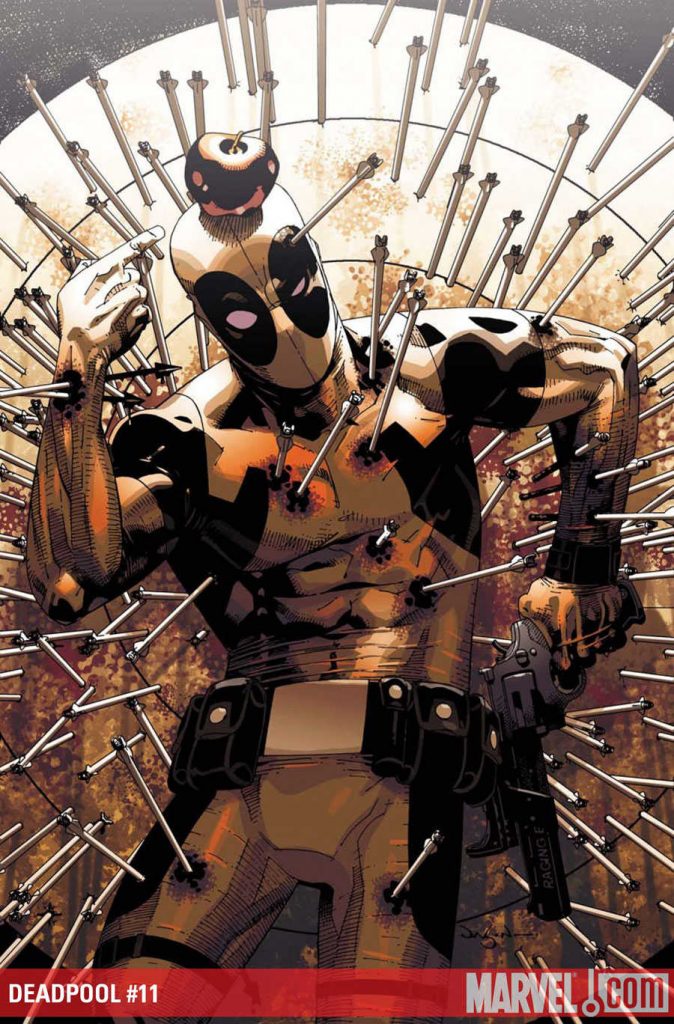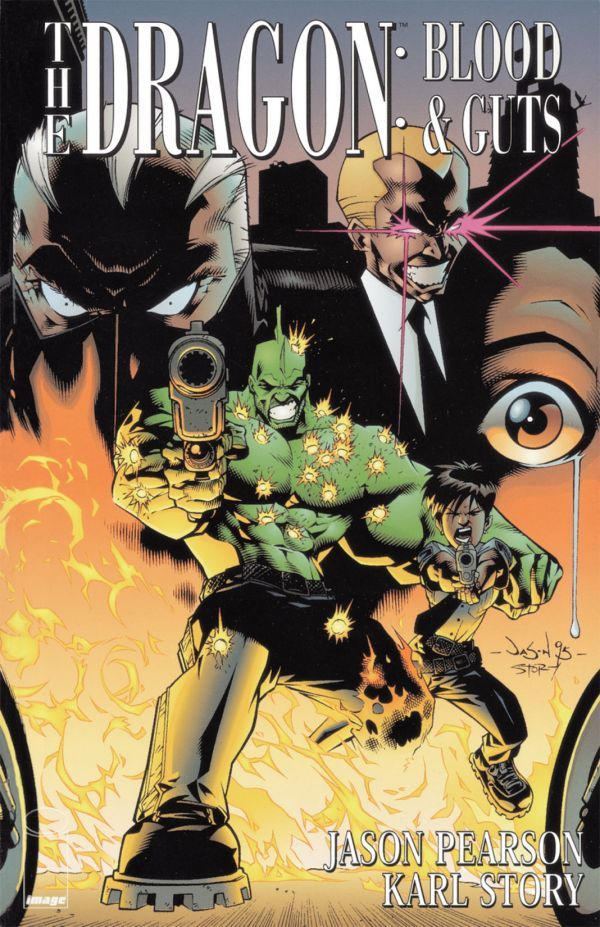I first saw Jason Pearson’s art back in the early 1990s. A chap with good taste had recommended the ‘Five Years Later’ Legion of Super-Heroes run, masterminded by Keith Giffen; I was unaware of the controversy surrounding the book at the time, but I thoroughly enjoyed the approach taken with the book (influenced, to my mind, by Watchmen). There were back-up stories included, and Pearson became the penciller for these stories in the later half of Giffen’s tenure on the book; it was a completely different art style from Giffen’s (although I think it was based on his layouts because it retained the grid system initially) but it was a fresh, cartoony, funky, sharp style, and I liked it.
I would look out for Pearson work from then on. He drew an issue of Starman written by Peter David and Giffen that I sought out; there is an Uncanny X-Men annual from the same time that he drew, which still resides in my collection. The next thing to stand out was a three-issue mini-series he wrote and drew at Image, called The Dragon: Blood And Guts, which was about Erik Larsen’s Savage Dragon. It was a fun little action story in which Pearson paid homage to the Hong Kong cinema of John Woo (I recall there was a barman in the series who looked liked Woo), and demonstrated the contrast between his funky cartoony style and the balletic bloodshed content. This contrast was also in some work he did for Penthouse Men’s Adventure Comix – I’d bought it for the non-erotic, straight sci-fi story drawn by Alan Davis, but there was a sexual superhero story from Pearson in there that was very sexy indeed.

This contrast was even more evident in the work for which Pearson is probably best known: Body Bags. The first four-issue storyline appeared in 1996, the first title in the Dark Horse comics Blanc Noir line from Gaijin Studios (an Atlanta-based studio of amazing freelance artists: Adam Hughes, Brian Stelfreeze, Cully Hamner, Dave Johnson, Tony Harris and Jason Pearson, among others). It was about Mack Delgado, a body bagger (or professional killer), and his daughter, Panda, who wants to follow in the family footsteps. It is extremely violent, with lots of blood and killing (Mack aka Clownface uses an enormous knife to do his job), but in an entertaining way and riding the same vibe as the likes of Quentin Tarantino.

The first Body Bags finished in 1997 because Pearson got ill, delaying the end of the book. It is also one of the few runs of a book that Pearson drew. He has worked for many different publishers, drawing Batman at DC, various pieces at Marvel, occasional Hellboy and Grendel comics at Dark Horse, various books at Wildstorm (including an issue of Global Frequency, the series by Warren Ellis). There would be more Body Bags – one-shots in 2005 and 2008 – but he doesn’t have a large run on any particular book that can be used as a showcase for his talents.

There have been a couple of things at Marvel recently: he drew a Punisher annual in 2009 written by Rick Remender, an X-Force annual in 2010 written by Robert Kirkman, a Deadpool mini-series in 2010 and a couple of issues of Astonishing X-Men, but the closest thing to a run on a single title lately has been the covers for Deadpool. He has provided plenty of covers over the years: some covers for Robin, the covers for a villain-themed collection of specials at DC, and various books at Wildstorm over the years, before working almost exclusively at Marvel for the past five years. His covers for the six-issue mini-series The Loners were a highlight for being homages to posters of John Hughes’ films from the 1980s, but his Deadpool covers really evolved into a strong expression of his style and the humour of the character.

Pearson has suffered from some bad luck in his career. Apart from the illness that derailed Body Bags, there was also the series that never was: Redbird was initially solicited in 2005 as a five-issue mini-series at Wildstorm, plotted and drawn by Pearson and scripted by Ed Brubaker, about Nataly Lakota, a former Black Ops member who is trying to live a normal life after a mission gone awry, except for the government sending out a killer after Nataly because she walked away. Based on the creative team, concept and initial images, the book looked like it was going to be good, but it was cancelled without explanation, which was a great shame.

It was only when I was researching these notes that I found out about Pearson’s trouble from the end of last year; he has an official Facebook page, and he posted some thoughts that were about feeling very low. The comics online community gathered round and posted things to cheer him up, so we’ll have to see what happens next for Pearson. I hope that he bounces back and gets back to drawing comic books again, more than just covers, perhaps even writing his own stuff again. I really like his style, which is sharp and clean and vibrant; he is great with facial expressions; it has a sense of humour but handles action really well, which means he’s perfect for today’s comic book industry. [Thanks as always with these posts to the Comic Book Database for the information on Pearson’s bibliography.]





